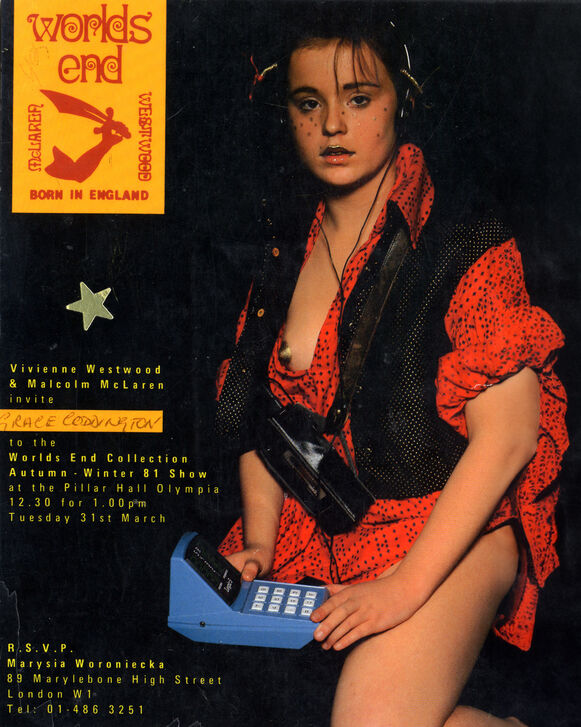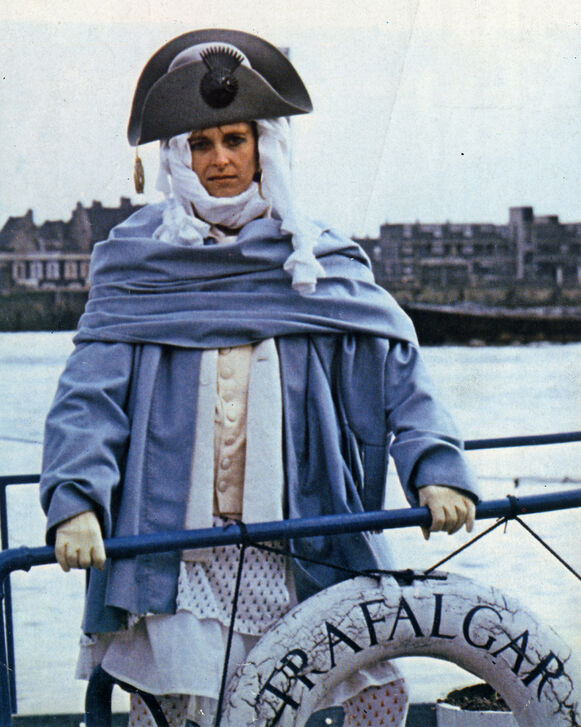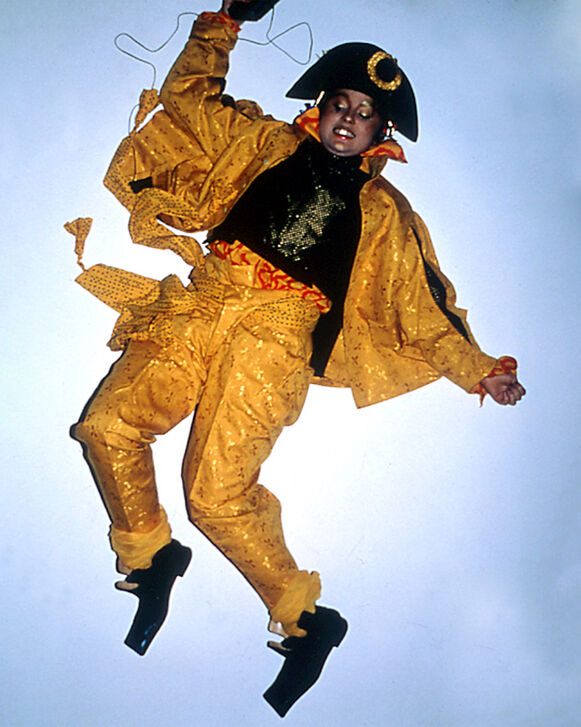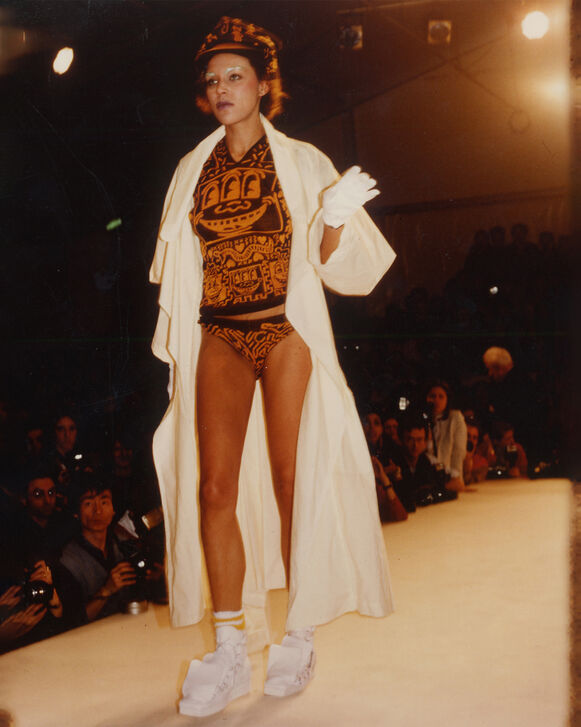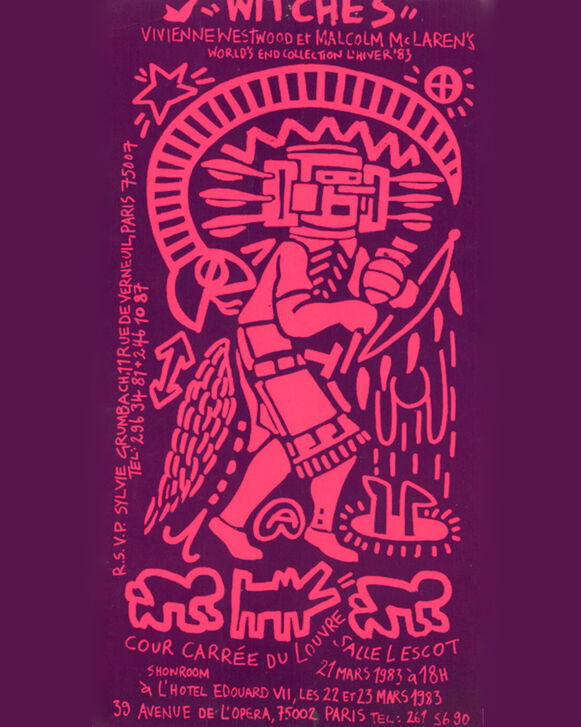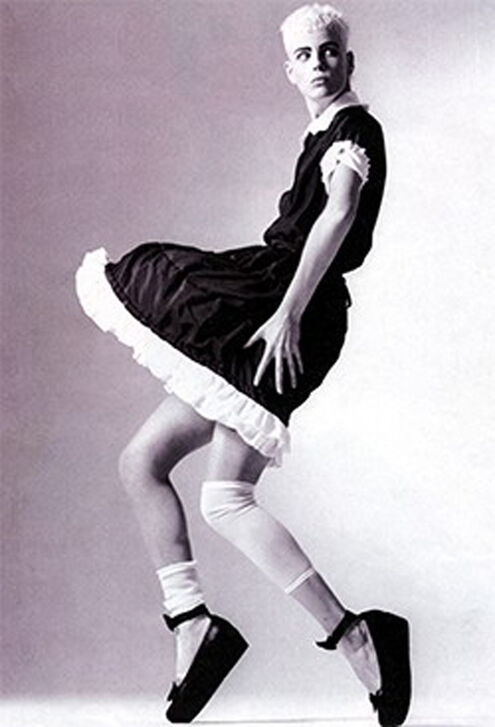Westwood World
The Story so Far
—
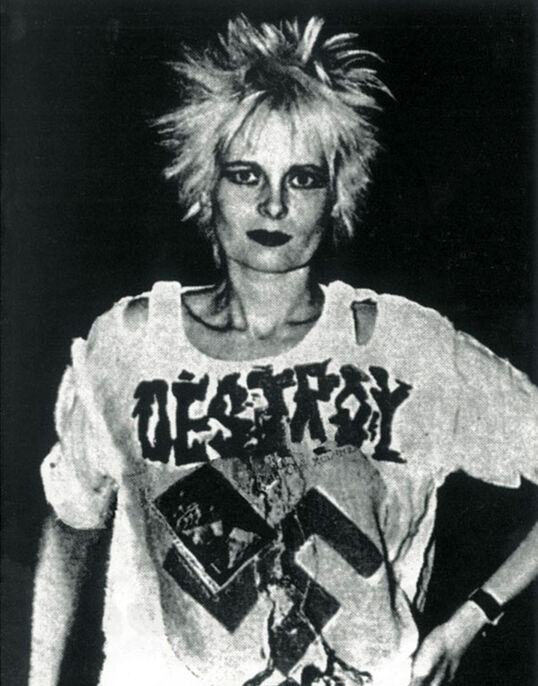
430 Kings Road
1971 – 1980
The hippie movement was the most popular fashion in late 1960s London, but it didn’t inspire young Vivienne Westwood and Malcolm McLaren. They were much more intrigued by acts of rebellion and typical 1950s clothing, music, and memorabilia.
Vivienne began by designing and making Teddy Boy clothes for Malcolm and in 1971 they opened a small boutique called Let it Rock at number 430 Kings Road, Chelsea in London.
A year later, Vivienne’s interests had turned to biker clothing, zips, and leather. The shop re-branded with a skull and crossbones and was renamed Too Fast to Live, Too Young to Die.
Vivienne and Malcolm began to design their own t-shirts with provocative printed slogans, which led to their prosecution under the 1959 Obscene Publications Act; they responded by re-branding the shop once again and producing even more t-shirts featuring hard-core images.
By 1974 the shop was renamed Sex, a shop “unlike anything else going on in England at the time” they used the slogan ‘rubberwear for the office’.
Two years later, popular band the Sex Pistols’ (managed by Malcolm) song ‘God Save the Queen’ went to number one in the charts but was refused airtime by the BBC. The shop reopened as Seditionaries, transforming the straps and zips of obscure sexual fetishism and bondage into fashion, and inspiring a D.I.Y. aesthetic. The mass media labelled this as ‘Punk Rock’.
The collapse of the Sex Pistols and the adoption of punk by the mainstream left Vivienne disenchanted. In 1980 the shop was refitted and renamed Worlds End, which is still the name that’s in use today.
The shop’s basement was formerly a restaurant, but Worlds End eventually absorbed it to expand the stockroom and staff facilities. Officially the shop hasn’t changed aesthetically since opening its doors. The original interior was restored in 2017, but all details remain as they were designed by Vivienne and Malcolm 40 years ago.
Vivienne used her creations to communicate ideas – often using graphics to confront issues of political and social injustice. The swastika symbol seen on the 1977 Anarchy Shirt, designed by Westwood & McLaren, was laid over an inverted image of Christ on the crucifix and Queen Elizabeth II on a British stamp, with the word 'DESTROY' emblazoned above the image. The graphics were meant as a provocative act of denouncing corruption and dictatorship. More broadly, it was a meant as a means to challenge the older generation, of saying “We don’t accept your values or your taboos - you’re all fascists.”
The Early Years
1981 – 1987
In 1984 the Nostalgia of Mud shop (now known as Worlds End) closes in West London and Vivienne relocates to Italy.
Vivienne receives an invitation to show her Spring-Summer 1984 ‘Hypnos’ collection in Tokyo at Hanae Mori’s ‘Best of Five’ global fashion awards, with Calvin Klein, Claude Montana, and Gianfranco Ferre.
Vivienne Westwood opens another London boutique on Davies Street in 1988.
In 1986 the orb logo was first used to symbolize taking tradition into the future.
Carlo D’Amario was appointed Managing Director of Vivienne Westwood Ltd in 1986.
The 1981 ‘Pirate’ Collection was Vivienne Westwood and Malcolm McLaren’s first official collaborative catwalk show. It informed the aesthetic of The Worlds End Boutique with its pirate’s galleon and ship features. This collection was filled with romantic looks in gold, orange, and yellow which burst onto the London fashion scene, ensuring its place in the house’s history of influence.
‘We’ve only stopped to note significant innovations, otherwise, the ideas carry through and develop throughout the collections.’ ‘Pirate’, Autumn-Winter 1981/82 was their first catwalk show. Looking at plundering history and the Third World. The research was into historical dress, keeping the original cuts as fashion. Inspired by Native American patterns, the ‘Pirate’ trousers had a baggy bum, in complete contrast to hippy hipsters and ‘tight arses’ of the time. The position of the neck when worn, was asymmetrical.
At this pivotal point in her career, Vivienne reimagined techniques based on traditional rectangular cuts. She had an idea she knew would work, knocked it up in rough and on a small scale, and tried it out on a little dummy. Through various adjustments and fittings, she arrived at a full-scale finished garment in the right fabric. Clothes always have a dynamic with the body. She continues to mix this in with historical cuts.
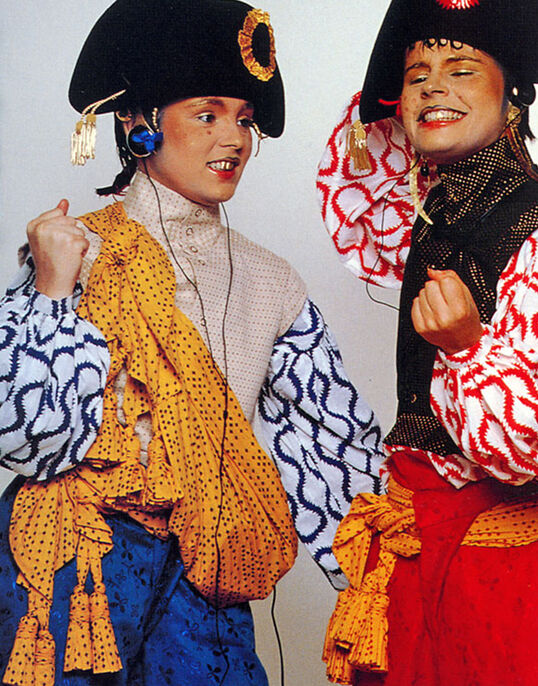
Collections:
Savage, Spring-Summer 1982 – Flat cutting from Japan. – Inspired by: Matisse and Picasso. – “In taking from other cultures I’m just doing what Picasso did in his painting Demoiselles d’Avignon’” (Vivienne) – Examines rapport between clothes and the body. – Slashed sleeves and contrast linings. – David Lynch’s ‘The Elephant Man’ inspired foreign legion hats.
Buffalo Girls (Nostalgia of Mud), Autumn-Winter 1982/83 – Colours: Mud. – Raw cut sheepskin. – Bras – underwear as outerwear. – Inspiration: Peruvian women wearing bowler hats and full skirts, dancing with their babies tied on their back.
Punkature, Spring-Summer 1983 – Inspiration: ‘Blade Runner’, desert landscape. – Distressed fabric and recycled junk. – Punk and couture. – Hand-dyed, hand-stitched. – Shoes of disused tyres and cord from favelas. – Giant tin can buttons. – The jersey Tube skirt.
Witches, Autumn-Winter 1983/84 – Visit to New York, met Keith Haring. His art looked like magic signs and hieroglyphics. Therefore – collection “Witches”. – Hip Hop, styling of garments. – Stop-frame look. – White trainers customised with three tongues. – Pointed Chico Marx hats.
Hypnos, Spring-Summer 1984 – Image: Greek God of Sleep – Collection nothing to do with sleep. – Very active, sportswear as high fashion. – Collaboration with Malcolm McLaren ceased. – Made in Italy. – Inspiration: gay subcultures. – Herpes sores makeup.
Clint Eastwood, Autumn-Winter 1984/85 – Vivienne said, “Sometimes you need to transport your idea to an empty landscape and then populate it with fantastic looking people.” – Fluorescent big macs and body stockings, clothes covered in company logos. – Day-Glo patches inspired by Tokyo’s neon signs.
Mini-Crini, Spring-Summer 1985 – Cardinal change. Fitted clothes. – English tailoring. Princess line coats, inspired by the Queen as a child. – Wish to kill masculine big shoulders of the 1980s. – Models are sexy, and curvaceous. – Attention drawn to hips. – Inspiration: Petrushka. – Rocking horse shoes.



